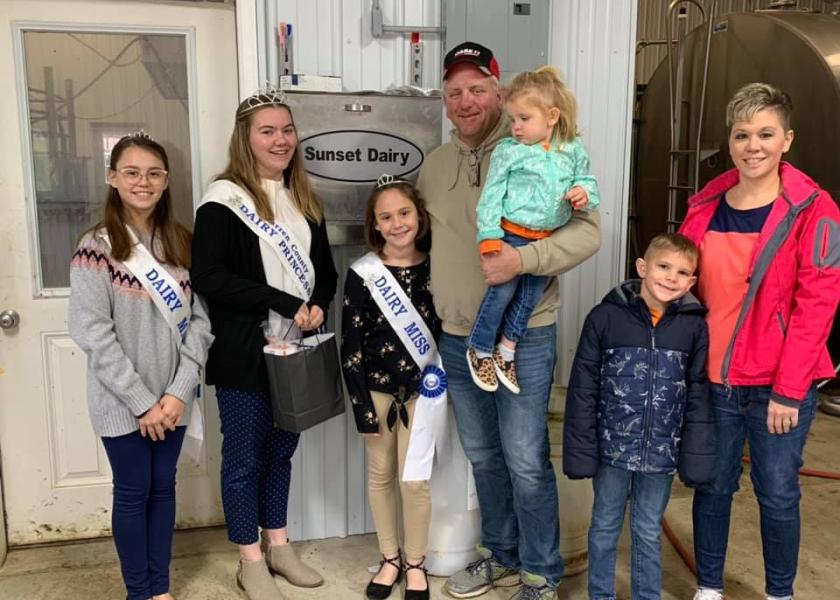How a Barn Fire and Lost Processor Forced This Dairy to Make Big Changes

One thing adversity teaches us is how to persevere. Dig deeper. Plow harder. At least this is what Pennsylvania dairy farmer, Todd Benedict, has learned when he faced two nightmare situations—a barn fire and losing his milk market.
In 2011, the first-generation dairy farmer milked around 320 cows when an early morning barn fire destroyed several barns, including the milking parlor, and took 110 of his cows. While Benedict found a way to rebuild, thanks to a strong Amish community that lent a helping hand, a year later he lost his milk market. Panic aside, the family is thankful that they were able to find another processor to ship their milk to, but they’ve learned a lot and changed some management strategies that have helped them survive during volatile times.
Soon after the uncertainty unraveled, Benedict had a meeting with his veterinarian, nutritionist, and lender, and all but one said he needed to quit.
“They told me I had too many strikes against me,” he said, sharing that the idea of not rebuilding never crossed his mind. He and his family have worked endlessly hard because he said that’s what dairy farmers do.
“What we learned really quick is where to put our money and not to take risky chances and really to work our butts off,” he said.
Today, Sunset Dairy, located in northwestern Pennsylvania, milks 650 cows and farms 720 acres. The family has learned to lean on their trusty and loyal outside team member—their nutritionist. In fact, they trust him so much that they let him see their milk check. This allows the nutritionist to strategically help their bottom line.
“Every ingredient has to prove itself,” Benedict says, sharing that a year ago they added Smartamine M to the ration to boost protein levels.
Benedict says that staying lean and mean is what is needed to survive this volatile market. While Sunset Dairy participates in the Dairy Margin Coverage (DMC) program, their form of risk management looks different than most—they breed 100% of their dairy herd to beef.
“By not having heifers you take yourself out of that whole inflation deal with the added feed costs and feed storage,” he says. “Which was something that I’d rather not have hemorrhage on the farm.”
According to Benedict, they would have had to invest $500,000 to $2 million in facilities to raise dairy heifer replacements. And by not investing that cost and focusing on ‘just’ milking cows alone has paid off for them. They purchase fresh cows, as needed, and Benedict shares he has a good cow broker who helps supply him with cows.
“The math takes a lot of discipline,” he says, stating that producers must know their boundaries.
Beef-on-dairy has worked well for Sunset Dairy, as they have been able to capitalize on the strong beef market. Every wet calf that hits the ground is beef and is worth $500 a head. Benedict says that not having to invest dollars into growing dairy heifers has allowed the family to focus on milking cows, which he shares the cows are milking very well.
The recipe for success for the Benedict family to survive uncharted waters is by working hard and knowing their boundaries. Looking to the future, the family hopes to milk more cows, but for now, during 2024, they just hope to stay afloat financially, like every other dairy producer.
“If you look at dairying and your profit per hour, everyone will tell you to quit,” he says. “But it’s in my blood, so that’s not an option. You have to ride out the good times with the bad times.”







